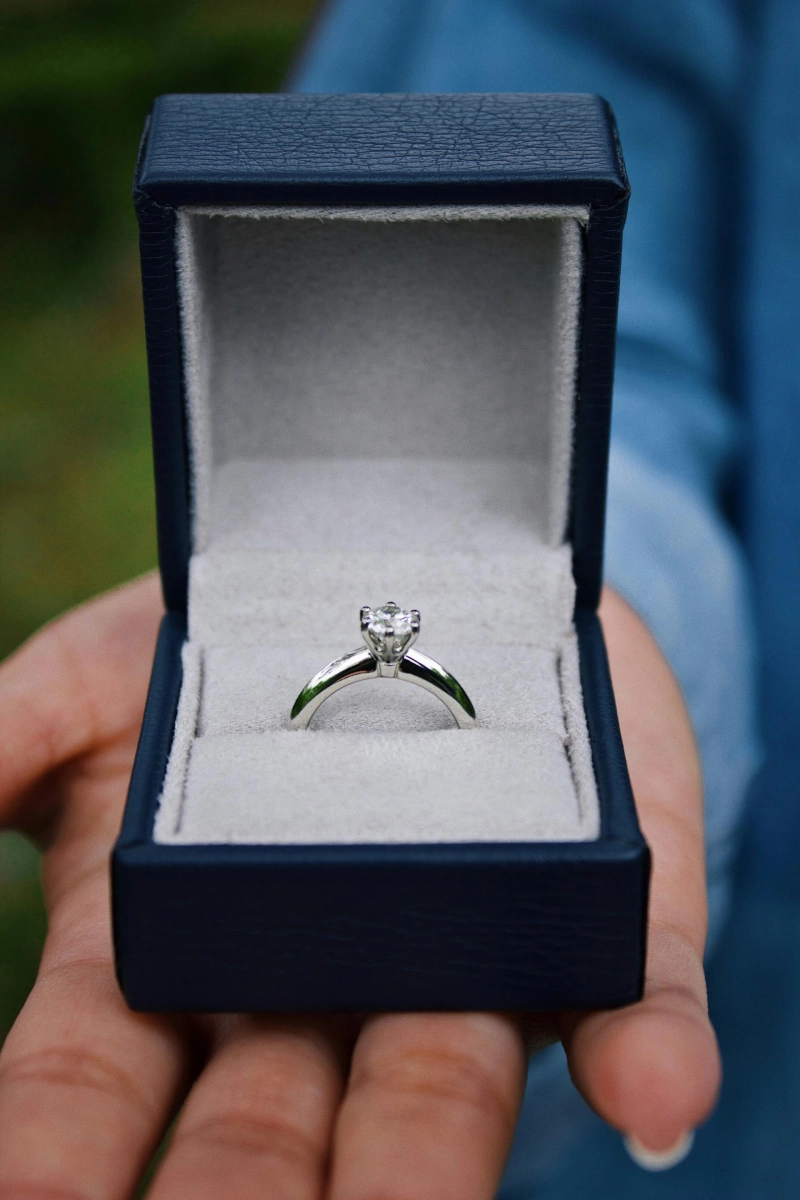Engagement rings have long been a symbol of love, commitment, and enduring partnership. While their fundamental purpose remains unchanged, their design has evolved significantly over centuries, influenced by culture, history, celebrity trends, and advancements in technology. From ornate vintage settings to sleek modern bands, engagement ring styles reflect the changing tastes and values of each generation.
The Origins of Engagement Rings and Their Historical Significance
The tradition of giving engagement rings dates back to ancient Rome, where women wore rings made of flint, bone, or iron to signify a mutual promise of marriage. The concept of a diamond engagement ring, however, began in 1477 when Archduke Maximilian of Austria presented a diamond ring to Mary of Burgundy. This marked the beginning of a trend among European aristocracy.
In the centuries that followed, engagement rings remained a privilege of the wealthy. The symbolism of the circle—as eternal and unbreakable—combined with the rarity and durability of diamonds, established the ring as a meaningful token of enduring love. By the 19th century, the Industrial Revolution and the discovery of diamond mines in South Africa made diamonds more accessible, gradually cementing their place in engagement traditions.
Iconic Styles Through the Eras
Victorian Era (1837–1901)
Named after Queen Victoria, who was famously sentimental, the Victorian era saw engagement rings infused with romantic symbolism. Rings from this period often featured intricate designs, including hearts, bows, and floral motifs. Gold was the dominant metal, and settings included seed pearls, colored gemstones, and occasionally small diamonds.
Edwardian Era (1901–1910)
The Edwardian era brought an air of refinement and elegance to engagement ring design. Platinum became the metal of choice due to its strength and ability to hold delicate filigree patterns. Rings from this time often had lace-like detailing and incorporated diamonds and pearls in intricate, symmetrical arrangements.
Art Deco Era (1920s–1930s)
Art Deco engagement rings reflected the bold, geometric, and glamorous aesthetic of the Roaring Twenties. Featuring clean lines, symmetrical designs, and contrasting colors, Art Deco rings often included step-cut diamonds and vibrant gemstones like sapphires, emeralds, and rubies. Platinum remained a popular metal, complemented by baguette diamonds and milgrain detailing.
Mid-Century Era (1940s–1960s)
The post-war era marked a return to tradition and simplicity. Solitaire diamonds became increasingly popular, thanks in part to De Beers’ legendary “A Diamond is Forever” campaign launched in 1947. The Tiffany setting introduced in the late 19th century but popularized mid-century, elevated the diamond above the band to maximize brilliance. Yellow gold re-emerged as a favored metal, and design focused on showcasing the central stone.
The Influence of Celebrities and Pop Culture
Celebrity engagements have significantly influenced engagement ring trends. In 1953, Jacqueline Kennedy’s emerald and diamond ring sparked a demand for colored gemstones. Elizabeth Taylor’s 33.19-carat Asscher-cut diamond ring, a gift from Richard Burton, became one of the most iconic engagement rings in history.
More recently, Princess Diana’s blue sapphire ring—later worn by Kate Middleton—ushered in a resurgence of colored stones in the 2010s. Likewise, celebrities like Blake Lively, with her blush-hued oval diamond, and Hailey Bieber, with her elongated oval solitaire, have set modern trends, driving demand for unique shapes and personalized designs.
Television and film have also shaped public perception of what an engagement ring should look like. Series like Sex and the City and The Bachelor have spotlighted ring presentations as cultural milestones, reinforcing the significance of the engagement ring in contemporary romance.
Modern Design Trends
Today’s engagement rings reflect a wide range of tastes, values, and priorities. Some key modern trends include:
Minimalist and Sleek Designs
Many contemporary couples favor minimalist designs that emphasize clean lines and simplicity. Thin bands, bezel settings, and small solitaire stones offer understated elegance. This shift often appeals to those who appreciate a more modern, everyday-wear aesthetic.
Custom-Made and Personalized Rings
Modern consumers often seek to create unique rings that reflect their individual love stories. Custom-made engagement rings allow for personalized details such as engraved messages, hidden birthstones, or unconventional shapes. This trend speaks to a broader desire for meaningful, rather than purely ornamental, jewellery.
Lab-Grown Diamonds and Ethical Sourcing
Sustainability and ethics are increasingly important to today’s buyers. Lab-grown diamonds, chemically identical to natural ones, offer an environmentally friendly and conflict-free alternative. Brands now prioritize ethical sourcing, transparency, and fair labor practices, aligning with values-driven purchasing decisions.
Non-Traditional Stones and Settings
Colored gemstones such as morganite, aquamarine, and black diamonds have gained popularity among those looking for something different. East-west settings, asymmetrical designs, and mixed-metal bands offer fresh alternatives to traditional norms.
Predictions for the Future of Engagement Ring Designs
Looking ahead, engagement ring design is expected to continue evolving in response to social, technological, and environmental factors. Here are a few predicted trends:
Greater Technological Integration
From 3D-printed prototypes to virtual try-on apps, technology will continue to reshape the engagement ring buying experience. AI tools may help customers design their ideal ring based on personality, lifestyle, and aesthetic preferences.
Emphasis on Ethical and Sustainable Choices
As consumers become more informed, demand for traceable and sustainable rings will grow. This may include blockchain-tracked diamonds, recycled metals, and greater transparency in the supply chain.
Rise of Gender-Inclusive and Non-Binary Designs
With shifting attitudes around gender and marriage, the future will likely see more diverse ring designs that move beyond traditional masculine and feminine aesthetics. Matching bands, unisex styles, and rings with shared symbolism will cater to all types of partnerships.
Fusion of Vintage and Modern
There is increasing interest in reimagining vintage designs with a contemporary twist. Art Deco-inspired settings with lab-grown stones, or Edwardian motifs reinterpreted with minimalist flair, will allow couples to blend timeless beauty with modern values.
Conclusion
The evolution of engagement rings mirrors societal change, from ancient customs to digital-age innovation. Each era leaves its mark—Victorian romance, Art Deco glamour, mid-century tradition, and modern minimalism—all contributing to the rich tapestry of design. As values shift toward personalization, sustainability, and inclusivity, engagement rings will continue to evolve, remaining not just a piece of jewellery, but a powerful expression of love and identity.



